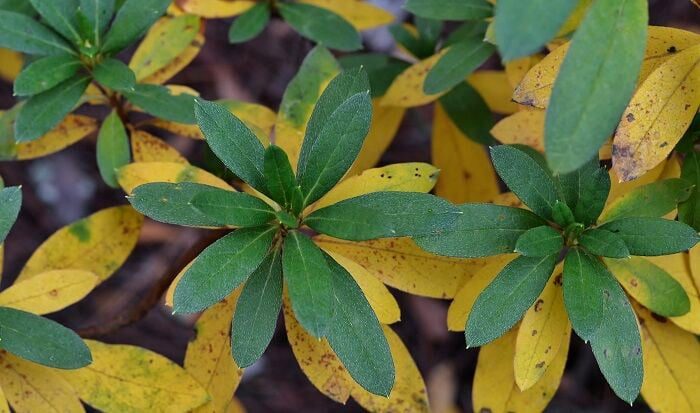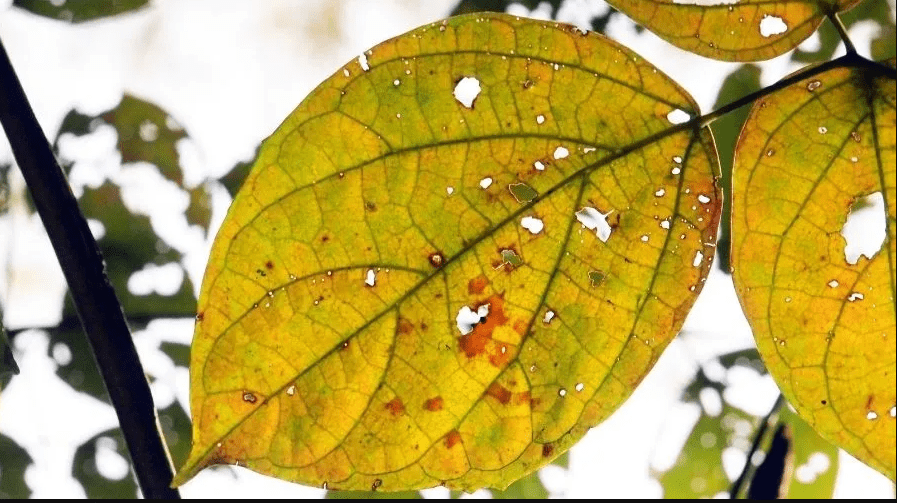Why do leaves on evergreens turn yellow?
A well-cared-for plant in the landscape that suddenly begins dropping leaves or needles can be a very troubling sight. There is usually no need to be alarmed since leaf and needle drop often occurs as a natural part of the yearly growth cycle of many plants. Most evergreens will naturally drop their older needles or leaves (closest to the trunk) after several years, making the term “evergreen” plant misleading. Examine your plant closely to determine if leaf drop occurs due to natural causes or environmental stress.
Broadleaf evergreens drop old interior leaves that have been shaded by new growth, resulting in a yellowish/brown color that you may be noticing.
Depending on the plant species, evergreen leaves generally last 1 to 6 years, with a percentage of leaves falling off every year.
An infestation of sap-feeding insects can suck the life out of a plant, causing leaves to turn yellow and drop off.
Needles of narrow-leaved evergreens, such as junipers, pines, and arborvitae, may shed their oldest leaves or needles in the late summer or early autumn. Most pine trees drop their needles in the fall, but some species may drop needles at other times. The natural yellowing of the older needles occurs uniformly from the top to the bottom of the tree. Needles at the tips of the branches stay green. This is a normal part of the plant’s growth cycle, so nothing needs to be done.
It is helpful to become familiar with your evergreens’ normal leaf drop renewal cycle. That will make it easier to pick up on abnormal shedding caused by extreme heat or cold, wet or drought, nutrient deficiency, insect infestation, disease, and pollution.
It is normal for older leaves to turn yellow and drop off in the early spring before new growth starts, but it is worsened by exposure to stress from the environment and pests. Be sure to look for insect pests, disease, and environmental stresses that cause unnatural leaf drop.
Examples of Yellow Evergreen Leaves:


